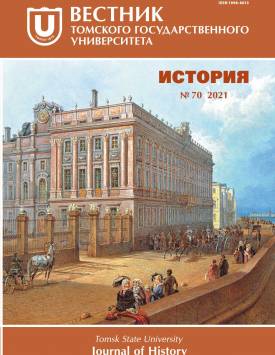Unknown Russian translation of the text created in connection with the accession of Jan III Sobieski to the Polish-Lithuanian throne in 1674
The change of the ruler in the Polish-Lithuanian Commonwealth and the related events of 1674 attracted the close attention of the tsar and the highest officials of the Moscow state. This interest undoubtedly led to the creation of a Russian translation of a literary work written in praise of the new monarch, Jan III Sobieski, the former grand Crown hetman. It was carried out directly in the Russian Permanent Embassy in Warsaw, and not in the Embassy Department (Posolsky Prikaz), which already tells us about the importance that Russian diplomats placed on this work. The range of interests of those who prepared the translation, especially clearly shows the translation of the new king’s title, in which “Inflanty” is replaced by “Kiev”, that has long become a part of the policy of Muscovy. The authorship of the translation is a controversial issue, but most likely it was made by the resident translator Semyon Lavretsky, which has indirect evidence. Historiography tells us that we are dealing with a historical find, and, for several years, this is the first such discovered document of agitation property, dedicated to Jan III. We do not know exactly the authors of the translated work, but the signatures under it were put by two quite significant figures of the Polish-Lithuanian Commonwealth - Bishop Andrzej Trzebicki of Krakow and Bishop Jan Gembicki of Plock, who at that time spoke on the side of His Royal Majesty. The creators of the praise tried in every possible way to give additional weight to the deeds of the new sovereign (already known for his exploits as a military commander), noting his merits: courage, determination, strength, luck, wealth, common “national” origin with the voters, etc. Using rhetorical techniques, various means of expression, the authors spoke of the hetman’s victories as a miracle, drew for his glorification divine images, comparisons from ancient history and the glorious history of the ancestors of Jan III. To show the benefits of the coming to power of the commander-king, the essay recalls the recent defeats of the Poles in the battles with the Turks, which entailed disastrous consequences and the signing of the Treaty of Buczacz, which they hated, in 1672. The defeat of the Ottomans by Sobieski at Chocim (1673) gave hope for the return of lost dignity. As the author of the article concludes, based on the sources, the reason for the appearance of this panegyric text is generally quite transparent - although the approval seemed unanimous, in fact, not everyone agreed with the transfer of the crown to Jan Sobieski, thus antiroyal unions were formed. Also, the document under study is another illustration attached to a not quite ordinary situation: the creation of the text of the oath of the king after his election, which was also insisted on by Trzebicki. It was necessary to explain the need for a more gracious attitude of the self-willed magnates and the szlachta people to the new applicant, to highlight his merits and point out the correctness of the choice made during the difficult Polish-Turkish war. At the end of the article, the text of the Russian translation itself is attached. The need for its publication, in addition to the most obvious explanations, is tied to several points. The literary monument acts as an important source on the history of the Russian language, it is interesting for its rhetorical techniques, unusual and quite rare allegories, which will later be used in the praises dedicated to the Polish king.
Keywords
Andrzej Trzebicki, Jan Sobieski, Vasyli Tyapkin, Polish-Russian relations in the 17th century, RzeczpospolitaAuthors
| Name | Organization | |
| Bogatyrev Arseniy V. | Volga Orthodox Institute named after St. Alexy, Metropolitan of Moscow | sob1676@yandex.ru |
References

Unknown Russian translation of the text created in connection with the accession of Jan III Sobieski to the Polish-Lithuanian throne in 1674 | Tomsk State University Journal of History. 2021. № 70. DOI: 10.17223/19988613/70/17
